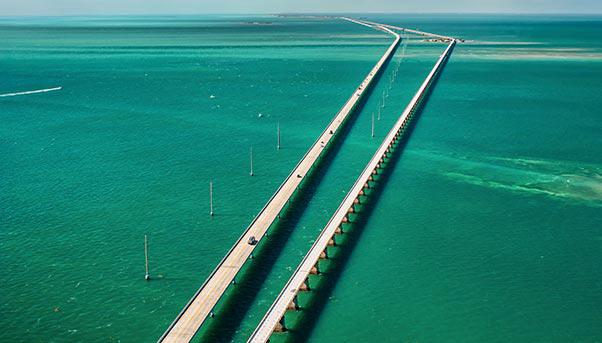
In his final speech before the Christmas holidays in Orlando, Florida, U.S. President-elect Donald Trump reiterated his plan to invest $1 trillion to rebuild the country’s roads, bridges and airports. It is a plan that he wants to launch as soon as this year. «We’re going to fix our country. It’s time. We have no choice,» he told reporters before going to his resort in Palm Beach north of Miami to spend the holidays. So once he is sworn in as president on January 20, one of the most important infrastructure programs in the last 50 years will begin.
It is a program that will treat Florida as one of the key states to modernize its infrastructure. Due to its geographical position, the state has thousands of kilometres of roads exposed to erosion by the sea and hurricanes. Since 1989, the number of areas considered to be critical with an accelerated deterioration in the quality of their infrastructure as a result of the natural elements increased by 88%.
The State of the Infrastructure
The state’s road and highway network that links the peninsula with the islands known as the Keys is the best example of the risk that infrastructure faces due to its location. Hundreds of kilometres of elevated roads and bridges that connect this archipelago reflect the beauty as well as the complexity of the transport network.
Tonya Mellen, civil engineer and author of the Florida Infrastructure Report Card, has a solution to the problem: act immediately. «Florida's infrastructure is stretching to meet our needs today, and with a growing population that changes quickly,» says Mellen, who prepared the report card for the American Society of Civil Engineers (ASCE). «Between our expected population increase, rising sea levels, and hurricane risks, our infrastructure needs to grow and adapt to be ready for the future.»
Ananth Prasad, the state’s former Secretary of Transportation, echoes her opinion in an interview with the “Orlando Sentinel” newspaper, recalling the paramount importance of immediate action to create a high-tech network of connections in the next 50 years and keep the state competitive.
Although rankings declare Florida as one of the top 10 states in the country for the quality of its transport network, it is a relative description because U.S. roads are in poor shape. In the Florida Infrastructure Report Card published in July 2016, the state’s roads got a C grade, slightly better than the U.S. average of a D. This represents a cost for citizens. The report calculates that traffic congestion in Miami and Orlando has reached $1,000 a year for every person who travels by car.

The Funding
So there is still a lot to do, according to experts. But funds are few. For 2016-2017, the local government has approved a $82.2 billion budget, $9.9 billion of which will be allocated to infrastructure. This amount matches the one for 2015-2016, less than 2% of Florida’s gross domestic product of $850 billion - too little for the fourth largest GDP in the United States after California, Texas and New York.
Most of the funds set aside for infrastructure will be used to maintain roads and bridges. About $3.3 billion for highways and $731.9 million to repair or replace bridges. There are 12,046 of them in the state with an average age of 50 years. Another $159 million is to ensure the safety of the roads. For Republican Governor Rick Scott, infrastructure is at the core of his “Florida First” program. «Our Florida First budget ensures Florida will have one of the best and well-maintained transportation systems in the world. We are making critical infrastructure investments in our highways, bridges, seaports, airports, transit and trails,» says Scott, who has been governing since 2011.
The Other Public Works
Roads are not the only crucial infrastructure. There are the airports, the busiest in the country after those in California. They are under pressure due to the increased air traffic during the past 10 years.
Florida needs an investment of at least $1.1 billion in the next five years. Aside from tourism – Florida’s most important source of revenue – the state’s economy thrives on trade. Its routes include the Gulf of Mexico as well as South America, Africa and Europe. But it needs better and more efficient ports and cutting-edge multimodal transport networks to ease the transit of goods. Work began in 2012, creating about 200,000 jobs, especially in the ports of Everglade, Tampa and Jacksonville.
Trump’s plan has raised expectations because the state needs a plan to mitigate the future effects of weather. In the next 30 years, climate change will bring about more intense flooding and hurricanes, putting to the test the state’s infrastructure. Florida has more than 13,000 kilometres of roads along the coast where 75% of the population lives. That is why Tonya Mellen says: “The best time to plan and build the infrastructure of tomorrow is today.”


